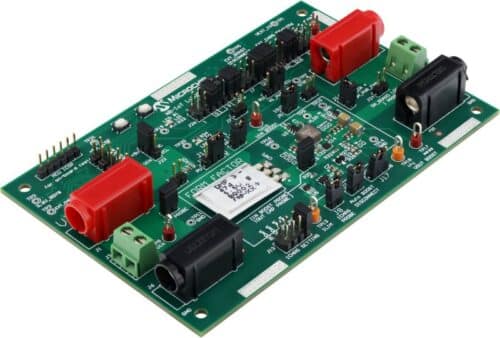The reference design provides an enhanced power solution tailored for the NB-IoT module market, specifically focusing on water and gas meters.

Narrowband Internet of Things (NB-IoT) is important because it enables efficient, low-power, and secure connectivity for many IoT devices. It facilitates the cost-effective deployment of large-scale IoT networks, allowing for increased device connectivity, improved data collection, and enhanced automation across various industries. Microchip has launched a reference design of the NarrowBand (NB) Power IoT to simplify the design process. The reference design offers an improved power solution for the NB-IoT module market, specifically targeting specialty water and gas meters. Replacing costly and bulky supercaps with smaller ones of 20 times lower value enhances reliability and efficiency, reducing the need for expensive components in your solution.
The reference design utilizes the affordable MIC2039 programmable high-side current limit power switch (0.2A – 2.5A) as the charging current source. This eliminates the requirement for specialized tooling during pre-charge, resulting in a more efficient manufacturing process. By employing this precise current source for supercap charging, the charge or charge recovery time converges more rapidly to the battery pack voltage than an RC charging solution. Additionally, this design safeguards the battery pack from excessive stress while ensuring the swiftest and most precise charging process. The reference design features fast and optimized supercap charging by leveraging the load switch as the current source.
The load switch enables the disconnection of the supercap from the battery pack, reducing leakage current when high power is unnecessary. With fast and predictable supercap charging, enabling charging before power-intensive tasks commence becomes sufficient. The load switch also allows disconnecting the supercap from the application by disabling it. To accommodate various power requirements, the voltage across the supercap can range from 2.5V up to 3.65V. An output voltage regulator, the MIC2875 boost regulator, maintains stability. By utilizing a DC-DC boost, the entire battery capacity becomes fully utilized, minimizing the reliance on additional battery packs. The high-power path is deactivated during deep sleep or listening modes, and a low-IQ power circuit takes over. This circuit incorporates the MCP1711 Low Dropout (LDO) regulator and MIC94060 high-side power switch. This solution minimizes the requirement for expensive and large supercapacitors. It also decreases or eliminates the need for specialized tooling during pre-charge. Furthermore, it offers a cost-effective charging current source.
This reference design has been tested by Microchip. It comes with a Bill of Material (BOM), schematics, Printed circuit board (PCB) layout, etc. You can find additional data about the reference design on the company’s website. To read more about this reference design, click here.






